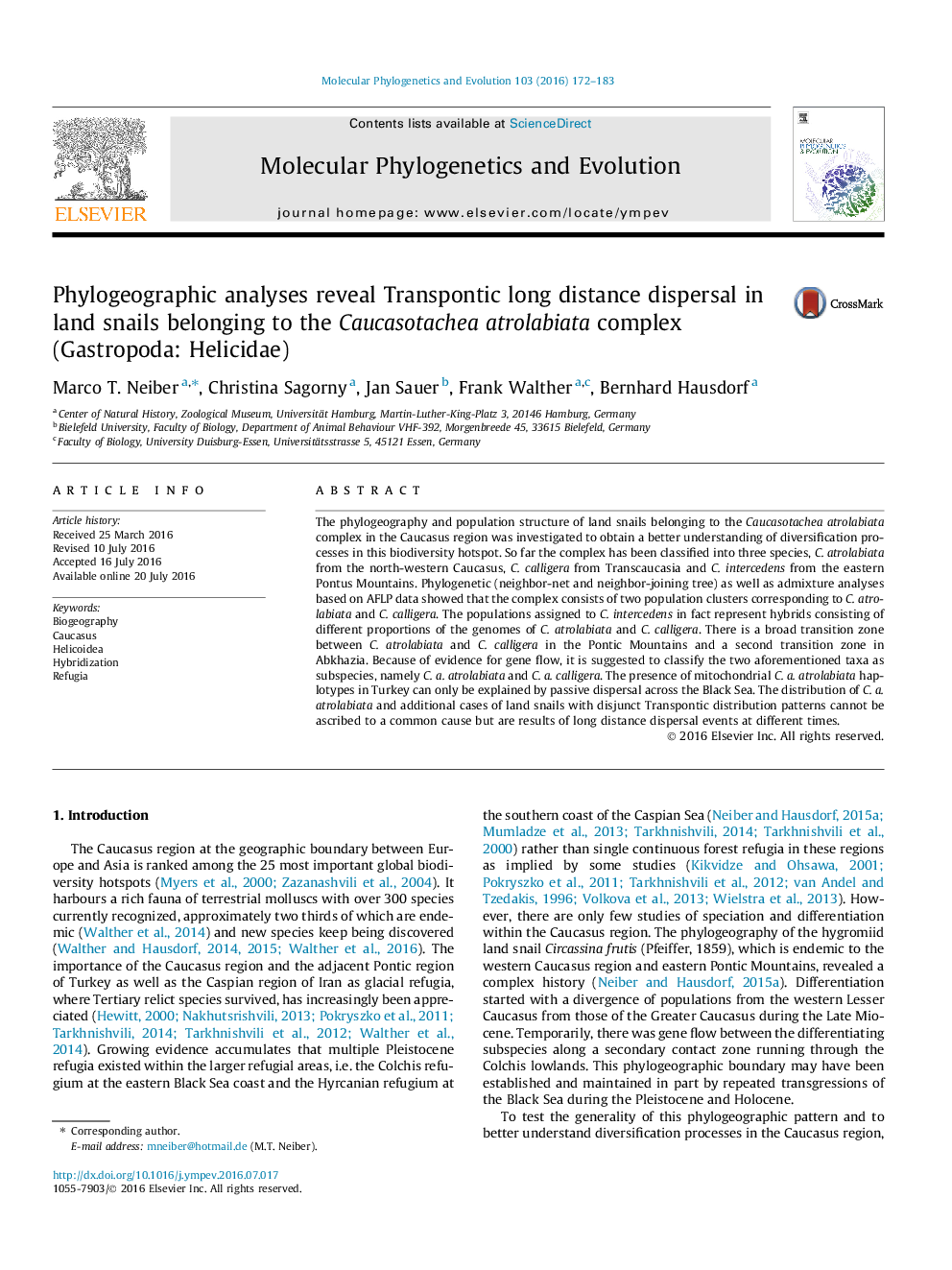| کد مقاله | کد نشریه | سال انتشار | مقاله انگلیسی | نسخه تمام متن |
|---|---|---|---|---|
| 2833637 | 1570794 | 2016 | 12 صفحه PDF | دانلود رایگان |

• The Caucasotachea atrolabiata complex consists of a single species with 2 subspecies.
• Transpontic dispersal explains phylogeographic structure in C. atrolabiata.
• Populations of C. intercedens are hybrids of C. a. atrolabiata and C. a. calligera.
• Hybrid zones exist in NE Turkey and Abkhazia.
The phylogeography and population structure of land snails belonging to the Caucasotachea atrolabiata complex in the Caucasus region was investigated to obtain a better understanding of diversification processes in this biodiversity hotspot. So far the complex has been classified into three species, C. atrolabiata from the north-western Caucasus, C. calligera from Transcaucasia and C. intercedens from the eastern Pontus Mountains. Phylogenetic (neighbor-net and neighbor-joining tree) as well as admixture analyses based on AFLP data showed that the complex consists of two population clusters corresponding to C. atrolabiata and C. calligera. The populations assigned to C. intercedens in fact represent hybrids consisting of different proportions of the genomes of C. atrolabiata and C. calligera. There is a broad transition zone between C. atrolabiata and C. calligera in the Pontic Mountains and a second transition zone in Abkhazia. Because of evidence for gene flow, it is suggested to classify the two aforementioned taxa as subspecies, namely C. a. atrolabiata and C. a. calligera. The presence of mitochondrial C. a. atrolabiata haplotypes in Turkey can only be explained by passive dispersal across the Black Sea. The distribution of C. a. atrolabiata and additional cases of land snails with disjunct Transpontic distribution patterns cannot be ascribed to a common cause but are results of long distance dispersal events at different times.
Figure optionsDownload as PowerPoint slide
Journal: Molecular Phylogenetics and Evolution - Volume 103, October 2016, Pages 172–183